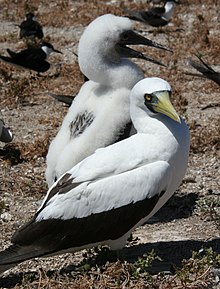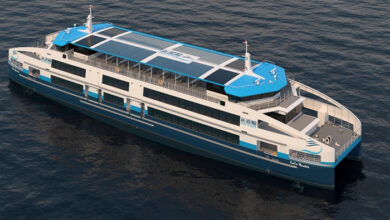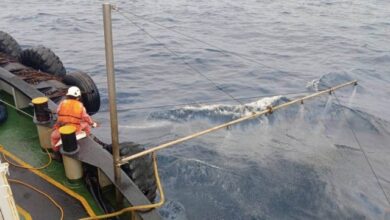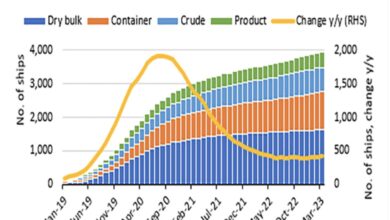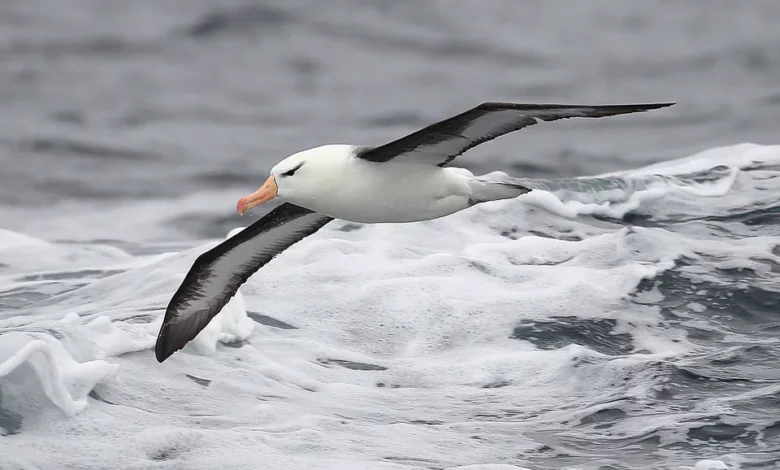
Pelagic describes a bird that spends a significant portion of its life on the open ocean, rarely venturing close to land except to breed. Pelagic birds may be found hundreds or thousands of miles offshore and are powerful fliers that can remain aloft for hours while gliding or soaring.
Pelagic birds are very unique in the avian world. While there is no doubt they are birds, they have some outstanding characteristics that are found among no other types of birds in the world.

Pelagic birds have exceptionally long, thin wings that allow them to fly effortlessly for long periods without rest. In fact, the wandering albatross has the longest wingspan of any bird in the world (8-12 feet from wingtip to wingtip), and the gray-headed albatross holds the record for the fastest level flight of any bird (79 miles per hour). Some pelagic birds can stay aloft for days or weeks at a time, and will even sleep in flight.
In many cases, true pelagic birds only return to land to nest and breed. While they may land on the water’s surface to rest occasionally or will float briefly after hunting and feeding, they can spend most of their lives in the air. When they do return to land, they often prefer rocky, cliff-lined coasts and offshore islands where strong air currents can help them take flight again.
Many pelagic birds have special salt glands that help extract excess salt from their bodies. This allows them to drink seawater and ingest water from their oceanic prey without accumulating toxic levels of salt in their bloodstreams. Birds with tube-like bills are called “tubenoses” because of this gland structure.
While seabirds face many threats, if they are able to avoid those hazards, pelagic birds can be remarkably long-lived. The oldest recorded living bird is a Laysan albatross named Wisdom who was banded in 1956 and lived to at least the age of 65, successfully raising chicks well into her senior years.
In addition to these remarkable characteristics, pelagic birds also share other traits that unite them as distinctive seabirds. These birds are highly piscivorous and feed on fish, squid, and crustaceans, though how they forage can vary significantly. Some pelagic birds are adept divers and will plunge into the water to catch prey, while others skim the surface after shallow-swimming fish. Others are brazen thieves and steal prey from other birds or even seals, sharks, and whales. Many pelagic birds also eat offal from fishing ships or trash dumped into the ocean. Unfortunately, plastic trash and debris such as floating, deflated balloons, or fishing nets can be tragically hazardous for many seabirds.
Pelagic Bird Species
There are dozens of pelagic bird species with a great range of sizes and geographic distributions. While the exact birds that are considered truly pelagic can vary depending on the characteristics assigned to seabirds, the most familiar types of pelagic birds include:
Albatrosses
Frigatebirds
Fulmars
Petrels
Shearwaters
Tropicbirds
For many birders, other types of birds heavily dependent on the sea, including puffins, murres, boobies, auks, and penguins, are also considered pelagic species.
Near-Pelagic Birds
There can be some disagreement about what makes a bird species truly pelagic and just how dependent on the ocean such birds must be to be officially classified as seabirds. Some birds are so heavily associated with coastal habitats and ocean sightings that they are considered near-pelagic birds, even though they are not seabirds in the formal sense.
Source: Spruce


